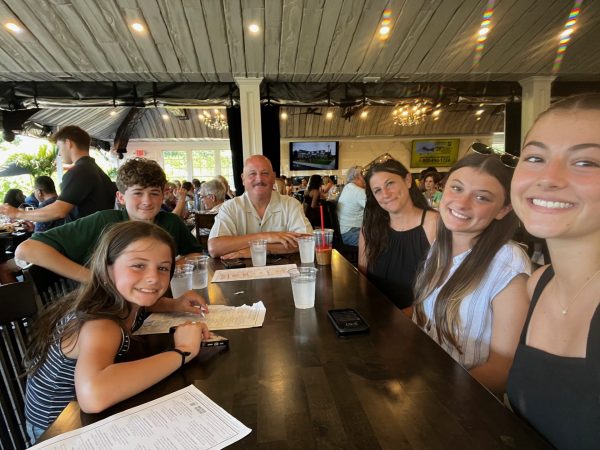Breezy Point: One Decade After Hurricane Sandy
Tragedy struck October 29, 2012, when Superstorm Sandy hit Breezy Point. Matthew Doyle, former Breezy Point resident, described the town as “a quiet beach community where everyone knew everyone.” Sandy, at one point a Category-3 storm, was the largest and most impactful storm to hit New York in decades, devastating just about all in its path. With winds exceeding 80 miles per hour, it left an impact on residents for years to come. On that day, not only did residents of Breezy Point have to escape from a fierce storm, they had to escape from a blazing fire as well. “I was grateful though that my parents evacuated and did not stay because their decision to leave was made at the last minute. They were planning to stay,” added Doyle. Despite the order of evacuation from then New York City Mayor Michael Bloomberg, nearly 90% of residents stayed, leaving many in danger.
At approximately 8:27 PM, a fire, which was later discovered to be caused by electrical wires on Ocean Avenue, broke out and destroyed over 110 Breezy Point homes, damaging significantly more. Firefighters from the Point Breeze Volunteer Fire Department, Rockaway Point Volunteer Fire Department, the Volunteer Fire Department of Roxbury, and the Fire Department of New York spent hours battling the blaze. They fought against fierce winds and other treacherous weather conditions, making this fire recognized amongst the worst residential fires in New York history. These courageous firefighters fought on the front lines, protecting their neighbors’ houses while some watched their own homes burn to the ground. In an interview with the Wave, a Rockaway Beach newspaper, in October 2022, in an article titled “Breezy Point: 10- Year Later,” FDNY Assistant Chief Joseph Pfeiffer described Breezy at the time of the fire: “There were no lights, the power was out, except for the orange glow in the sky, which was the fire that was burning dozens of buildings even before we got there.” He recalled, “It looked like the whole world was on fire.” After 12 long, grueling hours, the fire was eventually put out.
After seeing the devastation for the first time, Doyle had a similar reaction to Pfeiffer: “It was shocking to see so many homes completely burned to the ground.” With over 350 houses either burnt to the foundation, flooded, or severely damaged, many residents were left temporarily homeless. Since the storm, those who decided to rebuild have been building houses higher off the ground to protect themselves from future floods. As sea levels are rising, Breezy Point has become a major risk area for flooding. Despite this risk, many families, such as the Rudolph family, decided to rebuild. “We grew up here and there was never a doubt that we would stay to rebuild. We did not have it as bad as others. We knew people whose homes burned down or who lost everything. We only lost our first floor and cars,” said Jessie Rudolph, Breezy Point resident. “We could not live there for six months. We lived in an apartment above our business. We could not wait to get back,” she added. In contrast, Doyle’s family decided not to rebuild but sell their beloved property that was burnt down to the foundation. “This was a very hard decision. We, for a period of time, wanted to rebuild, but as we looked at the age of [my parents] – 76 and 84 at the time – and the time it would take to rebuild the house, we did not want them to be displaced for that long. It would probably take two years to have the house rebuilt,” explained Doyle.
“The Breezy Point community was resilient in the days/weeks/and months after the Storm and helped each other in any way they could,” said Doyle. Throughout this time of distress, many also turned to their faith for strength. “Breezy is a very religious community. Our faith in God definitely helped us through a lot of tough times,” Rudolph mentioned. With two Catholic churches located in town, church services were held after the storm. Many of the residents gathered to pray for their loved ones and their homes. Many also turned to their neighbors for support. “Everyone was a support system. We had all been through the same trauma, so we leaned on each other,” said Rudolph. “The sense of community was so strong in Breezy; neighbors became friends and over time were quickly part of your family,” Doyle added.
Many who lived in Breezy Point before the storm, like Rudolph and Doyle, see how forever changed it is. Despite larger and taller houses replacing once small bungalows, Breezy Point is seemingly back to normal, but the emotional toll of losing everything still affects residents. “As with any major life event, you always hold onto the memories of where you were in that moment, how your heart sank, and – for a period of time – how your world stopped,” reflected Doyle. “The storm is a point in our family’s history where we all were changed,” he added. Despite ten years having passed, the memories of that day will not be forgotten. “I have to say that it has left us with a sense of PTSD. When we hear of an impending storm, you think, ‘Please, God, not again,’” said Rudolph. Thus, this community on the tip of Far Rockaway defined resilience as residents bound together and recovered from being one of the most devastated neighborhoods affected by Sandy.

Hello! My name is Amelia Doyle. I am a member of the class of 2024. I play on the varsity volleyball team and the girls' varsity flag football team. I...





































